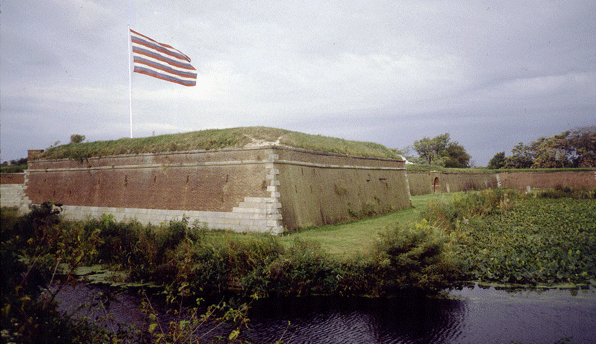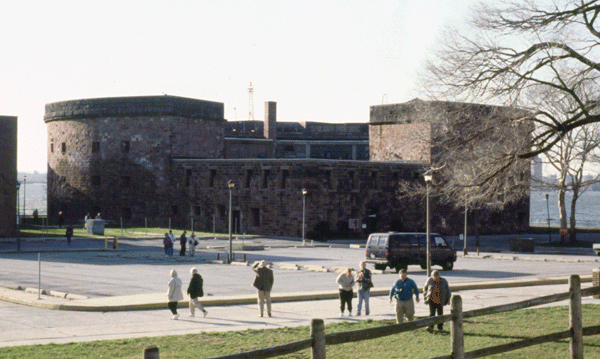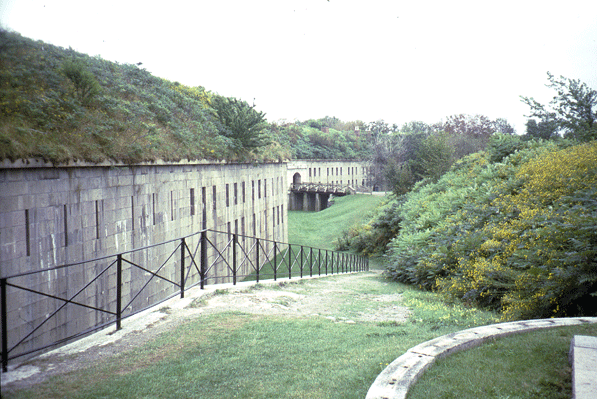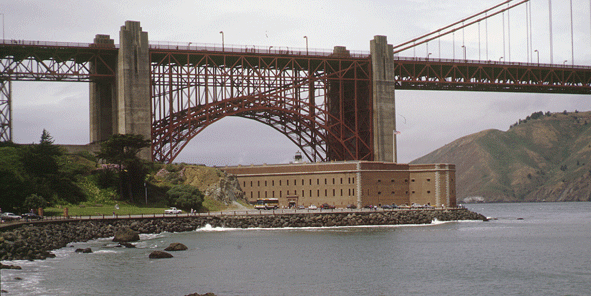U.S. Seacoast Defense 1781-1948: A Brief History
The First, Second, and Third Systems, 1794-1860
When the United States gained its independence in 1783, its remaining seacoast defenses were in poor condition. war scares in 1794 and 1807 caused Congress to appropriate money for fortifications to guard key harbors. These programs are called the First and Second Systems of American seacoast fortification. However, interest in building fortifications subsided once the threat of attack disappeared and the uncompleted works deteriorated. Built mostly of earth with some masonry backing and designed to hold smooth-bore cannons, the structures were neither uniform nor durable. Subsequent construction and erosion have all but destroyed these works.
-

-
Fort Mifflin, a First System work near Philadephia, PA (Fort Mifflin Historic Site)
-

-
Castle Williams, a Second System work on Governer’s Island, New York harbor
In 1816 Congress appropriated over $800,000 for a new fortification program, which became the Third System, the most ambitious American fortification construction program to date. Begun under peaceful conditions, the works were built more methodically and were permanent in nature. President James Madison appointed a Board of Engineers for Fortifications, which visited potential sites and prepared plans for the new works. Its first report in 1821 was the basis for a fortification program that remained the backbone of American coastal defense until the latter part of the 19th century. The original report suggested 50 sites, but by 1850 the board had recommended nearly 150 more. In all, the board suggested building at 200 Atlantic and Gulf Coast sites and 20 Pacific Coast sites. However, fortifications were only actually built at about one-fourth of these sites. The construction of these works, as were all subsequent seacoast fortification construction projects, was overseen by officers of the army’s Corps of Engineers. The mainstays of the defensive works were the large masonry structures built to house many guns in their vertical faces. Smaller works were built to guard less important harbors. The larger works, principally around the major harbors, were largely replacements for earlier works.
Civil War & Post-Civil War (1861-1875)
Early Modern Programs (Endicott & Taft, 1886-1917)
Post-WWI Period (1917-1940)
WWII Programs (1940-1950)
US Coast Defense Sites (1945-Present)
-

-
The Advanced Redpubt of Fort Barrancas, a Third System work near Pensacola, FL (Gulf Shores National Seashore)
-

-
Fort Warren, a Third System work near Boston, MA (A municipal Park)
-

-
Fort Point, a late Third System Fort in San Francisco, CA (Golden Gate National Recreation Area)





